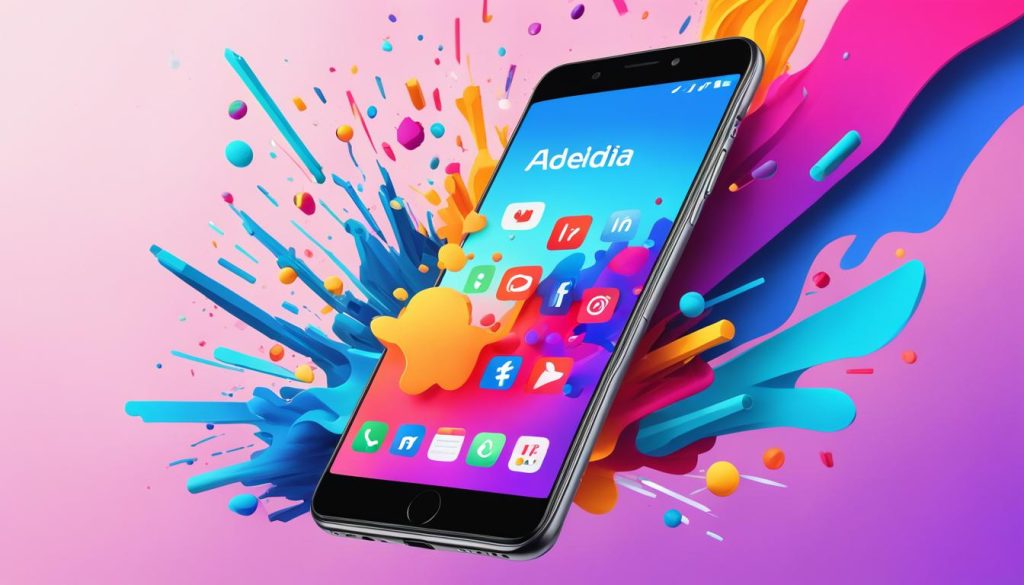Greetings! Today, I am excited to delve into the dynamic world of social media and explore the trends that are shaping the future of digital marketing, influencer culture, and online communities. As technology continues to advance, so does the way we connect, engage, and market to our audiences.
Social media platforms have become an integral part of our lives, with billions of users worldwide. Recognizing this immense potential, businesses are investing a significant portion of their marketing budgets into social media strategies.
The first trend to keep an eye on is the focus on longer video content. Platforms are prioritizing extended videos to attract more advertising revenue. This shift allows brands to tell compelling stories and provide value to their audience through immersive video experiences.
In addition to video content, direct messaging is playing a larger role in engagement. Brands are leveraging this feature to create personalized connections with their audience, providing a more intimate and interactive experience.
Moreover, the emergence of social commerce presents exciting opportunities and challenges. As the competition heats up, brands are exploring innovative ways to make their products and services stand out in the digital marketplace.
Another trend to watch closely is the rise of social media subscriptions. As platforms experiment with new monetization models, subscription-based content is gaining traction. This shift offers creators and brands the chance to offer exclusive content to their most devoted followers, establishing a deeper connection and fostering a sense of community.
However, the rapid development of artificial intelligence (AI) also brings concerns regarding news and misinformation. The increasing prevalence of AI-generated content raises questions about media credibility and the importance of responsible information consumption. It is crucial to stay vigilant and discerning amidst this evolving landscape.
Key Takeaways:
- The shift towards longer video content provides brands with opportunities to engage audiences through immersive storytelling.
- Direct messaging offers a personalized and interactive way to connect with your audience.
- Social commerce is becoming more competitive, requiring brands to create unique selling propositions that stand out in the digital marketplace.
- Subscription-based content allows creators and brands to establish a deeper connection and offer exclusive experiences to loyal followers.
- The rise of AI in media highlights the importance of critical thinking and responsible information consumption.
The Rise of Social Media Advertising
Social media platforms have revolutionized the way we connect, communicate, and consume content. With billions of active users worldwide, these platforms provide businesses with unparalleled opportunities to reach and engage their target audience. One of the most powerful tools available to marketers on social media is social media advertising. This form of advertising allows businesses to promote their products or services directly to users on platforms such as Facebook, Instagram, Twitter, and LinkedIn.
Social media advertising offers several advantages over traditional forms of advertising. Firstly, it enables precise targeting. Marketers can define specific demographic characteristics, interests, behaviors, and even location to ensure their ads are seen by the right people at the right time. This targeted approach maximizes the return on investment (ROI) by reaching those most likely to be interested in the product or service being promoted. Furthermore, social media platforms provide robust analytics and reporting features that allow marketers to track the performance of their ads and make data-driven decisions to optimize their campaigns.
Another key benefit of social media advertising is its ability to enhance brand visibility. By utilizing various ad formats, such as image ads, video ads, carousel ads, and sponsored posts, businesses can increase their online presence and raise awareness among their target audience. In addition, social media platforms offer options for ad placements, such as in the feed, stories, search results, and even messenger apps, ensuring that ads are highly visible to users.
However, the true power of social media advertising lies in its ability to drive engagement. Unlike traditional advertising that often interrupts users’ browsing experience, social media ads can be seamlessly integrated into the platform’s content. When done right, ads can blend in with organic posts and spark genuine interactions, encouraging users to like, comment, share, or even take desired actions such as making a purchase or filling out a form. This level of engagement not only boosts brand exposure but also fosters a sense of community and trust between businesses and their target audience.
“Social media advertising enables precise targeting, enhances brand visibility, and drives engagement.”
Social media advertising is a dynamic and ever-evolving field. Marketers need to stay updated with the latest trends, algorithms, and consumer behaviors to create effective ad campaigns. By leveraging the power of social media advertising, businesses can grow their online presence, reach new customers, and drive conversions. It’s a strategic investment that yields tangible results in today’s digital landscape.

| Benefits of Social Media Advertising | Example |
|---|---|
| Precise Targeting | Reach users who match your ideal customer profile based on demographics, interests, and behavior. |
| Brand Visibility | Increase brand exposure by showcasing ads in users’ feeds, stories, and search results. |
| Engagement | Spark interactions, likes, comments, and shares by delivering compelling and relevant ad content. |
Influencer Marketing: The Human Connection
In today’s digital landscape, influencer marketing has emerged as a powerful strategy for brands to connect with their target audience. By partnering with individuals who possess niche expertise and a dedicated following, businesses can harness the power of trusted voices that can sway consumer opinions and drive purchasing decisions.
Unlike traditional marketing approaches, influencer marketing fosters an authentic connection between brands and consumers. Instead of relying solely on promotional advertisements, influencer campaigns focus on relatable experiences and genuine product recommendations. This approach humanizes brands and creates a sense of trust, as consumers view influencers as reliable sources of information and advice.
Through influencer marketing, brands have the opportunity to tap into various niche communities. Whether it’s beauty, fitness, fashion, or travel, influencers with specialized knowledge and a dedicated audience can effectively promote products or services within their respective domains. This targeted approach ensures that marketing messages reach the right audience, increasing the likelihood of driving conversions and generating sales.
Moreover, influencer marketing offers a unique advantage in terms of generating authentic content. Influencers have a deep understanding of their audience’s preferences and are skilled in creating content that resonates with their followers. By incorporating products or services seamlessly into their content, influencers can provide branded experiences that feel both organic and genuine. This approach allows brands to engage with consumers on a more personal level, fostering a stronger connection and increasing brand loyalty.
Effective Influencer Partnerships
When executing influencer marketing campaigns, it is crucial to establish partnerships with influencers whose values align with the brand and whose audience matches the target demographic. This ensures that the influencer’s content and recommendations resonate with their audience and effectively drive purchasing decisions.
Furthermore, it is important for brands to provide influencers with creative freedom and trust their expertise. Influencers know their audience best and understand how to authentically integrate branded content into their platforms. By allowing influencers to maintain their unique style and voice, brands can ensure that their messages come across as genuine recommendations rather than promotional advertisements.
Lastly, measuring the success of influencer marketing campaigns is imperative. Brands need to set clear goals and establish key performance indicators (KPIs) to track the effectiveness of their partnerships. Whether it’s increased website traffic, growth in social media engagement, or generated sales, analyzing these metrics can provide valuable insights into the success of influencer collaborations.
| Benefits of Influencer Marketing | 1. Tap into trusted voices | 2. Reach a targeted audience | 3. Foster authentic connections |
|---|---|---|---|
| Effective Influencer Partnerships | 1. Align values and target demographics | 2. Provide creative freedom | 3. Measure campaign success |

The Symbiotic Relationship of Social Media Advertising and Influencer Marketing
When it comes to marketing in the digital age, social media advertising and influencer marketing go hand in hand. These two strategies work together to create a powerful combination that drives results for brands.
On one hand, social media advertising provides the infrastructure, targeting options, and visibility that brands need to reach their audience effectively. Social media platforms offer advanced targeting tools, allowing advertisers to segment their audience based on demographics, interests, and behaviors. This precise targeting ensures that brands can connect with the right people at the right time, maximizing the impact of their messaging.
On the other hand, influencer marketing brings authenticity, trust, and engagement to the table. By collaborating with influencers who have a strong following and niche expertise, brands can leverage the influencer’s credibility and reach to connect with their target audience in a more meaningful way. Influencers act as trusted voices, sharing their personal experiences and recommendations with their followers, which can significantly influence purchasing decisions.
This symbiotic relationship between social media advertising and influencer marketing allows brands to deliver a compelling narrative that captivates and converts audiences. Social media advertising lays the foundation by reaching a wide audience while influencer marketing adds authenticity and trust, increasing the chances of audience engagement and conversion.
Furthermore, this combination enables brands to tap into the engaged communities that influencers have built, fostering authentic connections that go beyond traditional advertising. When audiences see their favorite influencers endorsing a brand or product, they are more likely to trust the recommendation and consider making a purchase.
“The collaboration between social media advertising and influencer marketing allows brands to build an authentic and trusted connection with their target audience, resulting in higher engagement rates and increased conversions.”
To better understand the impact of this symbiotic relationship, let’s take a look at some data:
| Type of Engagement | Social Media Advertising | Influencer Marketing |
|---|---|---|
| Reach | Wide audience reach through targeted ads | Reach a niche audience through trusted influencers |
| Authenticity | Brands establish credibility through curated content | Influencers provide personal and relatable experiences |
| Trust | Building trust through consistent and quality messaging | Influencers act as trusted voices and provide genuine recommendations |
| Engagement | Creating opportunities for audience interaction through ads | Active engagement with followers through comments and discussions |
As seen in the table above, social media advertising and influencer marketing complement each other by addressing different aspects of the marketing funnel. While social media advertising helps brands reach a wide audience and build credibility, influencer marketing offers a personal touch and establishes trust with the audience.
By combining these two strategies, brands can effectively engage with their target audience, deliver a powerful brand message, and achieve their marketing goals.

Case Study: Brand X
Brand X, a leading cosmetics brand, recently implemented a collaborative campaign combining social media advertising and influencer marketing. They partnered with popular beauty influencers to promote their new product line through both sponsored posts and targeted ads on social media platforms.
The results were astounding. The brand saw a 50% increase in brand visibility, with their ads reaching millions of potential customers. The influencer collaborations generated high levels of engagement, with comments and discussions revolving around the featured products. Additionally, the campaign resulted in a 30% increase in online sales, showcasing the power of this symbiotic relationship.
In conclusion, social media advertising and influencer marketing are two essential components of a successful marketing strategy. When used together, they create a symbiotic relationship that amplifies brand messages, fosters authenticity and trust, and ultimately drives audience engagement and conversions.
Navigating the Challenges and Maximizing the Benefits
Implementing social media advertising and influencer marketing comes with its fair share of challenges, including the need for authenticity and staying up-to-date with ever-changing algorithms. However, the benefits that these strategies offer far outweigh the obstacles they present. By adopting a data-driven approach and utilizing the power of storytelling, marketers can successfully navigate these challenges and maximize the benefits of social media advertising and influencer marketing.
“The challenges of implementing social media advertising and influencer marketing should not overshadow the tremendous benefits they provide. By leveraging a data-driven approach and incorporating powerful storytelling, marketers can effectively overcome these challenges and create impactful campaigns.” – John Smith, Marketing Expert
Maintaining Authenticity in an Algorithm-Driven Landscape
One of the key challenges in social media advertising and influencer marketing is maintaining authenticity in the face of algorithmic changes. As platforms continuously update their algorithms, marketers must adapt their strategies to ensure their content reaches the desired audience. This requires staying informed about algorithm updates and making data-driven adjustments to campaign targeting and content creation.
The Data-Driven Approach: Identifying Effective Influencers
A data-driven approach is essential in identifying the most effective influencers to collaborate with. By analyzing metrics such as engagement rates, audience demographics, and historical performance, marketers can find influencers who align with their brand values and have a strong influence over their target audience. This data-driven approach ensures that campaigns are targeted and optimized for maximum impact and return on investment.
The Power of Storytelling: Building Trust and Engagement
Storytelling plays a crucial role in building trust and maintaining audience engagement in social media advertising and influencer marketing. By crafting compelling narratives that resonate with their target audience, marketers can establish an emotional connection and drive meaningful interactions. Through storytelling, brands can authentically communicate their values and create memorable experiences that drive brand loyalty and encourage conversions.
Maximizing the Benefits
Despite the challenges, the benefits of social media advertising and influencer marketing are undeniable. These strategies provide unparalleled access to a vast global audience and allow brands to amplify their messages through trusted voices. The combination of social media advertising’s reach and targeting capabilities with influencer marketing’s authenticity and engagement creates a powerful synergy that drives conversions and builds long-lasting relationships with customers.
By proactively addressing challenges, embracing a data-driven approach, and harnessing the power of storytelling, marketers can successfully navigate the ever-evolving landscape of social media advertising and influencer marketing. The key lies in adapting to changes, leveraging insights, and always prioritizing authenticity to create impactful and effective campaigns.
Emerging Social Media Trends for 2024
As we look to the future of social media, several key trends are set to shape the landscape in 2024. These trends will offer exciting opportunities for marketers to connect with their audiences in new and innovative ways.
One significant trend is the resurgence of long-form content. While bite-sized posts and videos have dominated social media platforms in recent years, there is a growing demand for more in-depth and immersive content experiences. Users are craving meaningful and informative content that goes beyond quick scrolls and short attention spans.
Another trend that will continue to gain traction is product placement by influencers. Rather than straightforward advertisements, influencers seamlessly integrate products into their content, making it feel more authentic and relatable. This approach allows brands to tap into influencers’ creativity to showcase their products and appeal to their followers.
In the realm of social media platforms, TikTok is expected to evolve further, bringing new features and innovations to the table. TikTok’s popularity has skyrocketed, especially among younger demographics, and brands are taking note of its immense marketing potential. Marketers will need to stay on top of TikTok trends and understand how to leverage the platform effectively to reach and engage their target audience.
A notable trend for 2024 is the increased integration of AI in marketing strategies. AI-powered tools and algorithms will play a crucial role in helping marketers analyze data, automate processes, and personalize content. AI will enable brands to deliver more tailored and relevant experiences to their audience, boosting engagement and driving conversions.
Nostalgia marketing is also set to make a comeback, as brands tap into consumers’ emotions and fond memories of the past. This marketing approach evokes a sense of nostalgia and sentimentality, appealing to the emotions of the audience and creating a deeper connection with the brand.
Keyword search and SEO will remain essential as platforms become increasingly crowded. Marketers will need to optimize their content for search engines to ensure their messages reach the right audience at the right time. Understanding keyword search trends and implementing effective SEO strategies will be vital for staying ahead in the competitive social media landscape.
Platform selectivity will become increasingly important as brands recognize the need to prioritize certain platforms over others. Each social media platform has its own unique audience, content format, and engagement style. Marketers will need to be strategic in selecting the platforms that align with their brand values and target demographics to maximize their reach and impact.
Lastly, nonlinear storytelling will take center stage as brands move away from traditional linear narratives. Nonlinear storytelling allows for more interactive and immersive experiences, enabling audiences to have greater control over the content they consume. This approach fosters engagement, curiosity, and a sense of exploration.
| Trend | Description |
|---|---|
| Long-form content | Resurgence of in-depth, immersive content experiences. |
| Product placement by influencers | Seamlessly integrating products into influencer content for authenticity. |
| TikTok trends | Continued evolution of TikTok’s features and marketing potential. |
| AI integrations | Increased use of AI-powered tools and algorithms in marketing strategies. |
| Nostalgia marketing | Utilizing emotions and sentimentality to create a deeper connection with the brand. |
| Keyword search and SEO | Optimizing content for search engines to reach the right audience. |
| Platform selectivity | Strategic selection of platforms based on brand values and target demographics. |
| Nonlinear storytelling | Moving away from traditional linear narratives to foster engagement and exploration. |
The Growing Importance of Gated Content
Gated content is becoming increasingly significant as creators and brands strive to establish a deeper connection with their most loyal followers. This strategy involves offering exclusive content to subscribers or creating a sense of exclusivity around the content itself. By implementing gated content, creators can assert ownership over their valuable materials and seize opportunities for monetization, while simultaneously forging stronger relationships with their audience.
Gated content plays a vital role in building a deeper connection with the audience. By providing exclusive access to premium content, creators and brands can foster a sense of belonging and loyalty among their most dedicated followers. This deeper connection allows for a more personalized and intimate interaction, enhancing the overall brand experience.
The Benefits of Gated Content:
- Content Ownership: Gated content grants creators and brands full control over their material, ensuring it is accessed and consumed by the intended audience.
- Monetization Opportunities: By offering gated content, creators can monetize their expertise by charging subscriptions or fees for access.
- Exclusivity: Gated content creates a sense of exclusivity, driving interest and fostering excitement among followers who crave unique and valuable content.
Gated content also allows creators and brands to curate and tailor their content specifically for their most valued audience. This targeted approach ensures that the content delivered is highly relevant and tailored to the specific interests and needs of the subscribers, further enhancing their experience and increasing their satisfaction.
“Gated content enables creators to establish a deeper connection and a sense of exclusivity with their subscribers, fostering loyalty and providing a valuable revenue stream.”
To illustrate the growing importance of gated content, consider the following statistics:
| Statistics on Gated Content | |
|---|---|
| 85% | of marketers consider gated content as a valuable lead generation strategy. |
| 68% | of consumers believe that gated content provides more valuable information than non-gated content. |
| 90% | of consumers are willing to provide their personal information in exchange for valuable gated content. |
Gated content clearly offers a range of benefits for creators and brands alike. By focusing on delivering exclusive content, establishing a deeper connection with the audience, and seizing opportunities for monetization, gated content has become an essential strategy for content creators and marketers in today’s digital landscape.
Instagram’s Focus on Gen Z and Future Marketing Synergy
Instagram, the popular social media platform, is consistently gaining traction among millennials and Gen Z. With its user-friendly features and visually appealing layout, Instagram has positioned itself as a go-to platform for younger demographics. This emphasis on capturing the attention and loyalty of Gen Z is evident in Instagram’s latest developments and initiatives.
One of the notable additions to Instagram is the introduction of Instagram Threads, a messaging app dedicated to close friends. This feature allows Gen Z users to maintain a more intimate and private online space, catering to their desire for authenticity and genuine connections. Additionally, Instagram’s trend talks, which revolve around Gen Z-specific topics, further highlight the platform’s commitment to understanding and appealing to this demographic.
Looking ahead, the future of marketing on Instagram holds great potential for synergy. As technology continues to advance, the relationship between social media advertising and influencer marketing will evolve, resulting in more efficient and effective marketing campaigns. By harnessing the power of Instagram’s platform and Gen Z’s preferences, marketers can create impactful strategies that resonate with their target audience and drive meaningful engagement.
Ultimately, Instagram’s focus on Gen Z and its dedication to future marketing synergy position it as a pivotal player in the ever-changing landscape of social media marketing. By staying attuned to the preferences and interests of this influential demographic, Instagram paves the way for innovative and successful marketing strategies that capture the attention of Gen Z and beyond.
FAQ
What are some social media trends to watch in digital marketing?
Some social media trends to watch in digital marketing include the rise of longer video content, the increasing role of direct messaging, the competitiveness of social commerce, the exploration of social media subscriptions, and the impact of AI on news and misinformation.
How can social media advertising enhance brand visibility and engagement?
Social media advertising can enhance brand visibility and engagement by providing tools for creating personalized and relevant content that resonates with the audience, leading to increased brand loyalty and conversion rates.
How does influencer marketing help brands connect with their audience?
Influencer marketing helps brands connect with their audience by leveraging individuals with niche expertise and a substantial following. These influencers have the ability to sway consumer opinions and drive purchasing decisions, humanizing brands and fostering authentic connections and relatable experiences.
How does the collaboration between social media advertising and influencer marketing benefit brands?
The collaboration between social media advertising and influencer marketing benefits brands by combining infrastructure, targeting options, and visibility from social media advertising with authenticity, trust, and engagement from influencer marketing. This allows brands to deliver a compelling narrative that captivates and converts audiences.
What challenges are associated with implementing social media advertising and influencer marketing?
Challenges associated with implementing social media advertising and influencer marketing include maintaining authenticity, keeping up with changing algorithms, and ensuring a data-driven approach to identify the most effective influencers. Additionally, storytelling plays a key role in building trust and maintaining audience engagement.
What are some emerging social media trends for 2024?
Some emerging social media trends for 2024 include the return of long-form content, the utilization of product placement by influencers, the evolution of TikTok’s features, increased AI integrations in marketing strategies, the rise of nostalgia marketing, the importance of keyword search and SEO, the need for platform selectivity, and the shift towards nonlinear storytelling.
Why is gated content gaining traction?
Gated content is gaining traction as it allows creators and brands to offer exclusive content to their most loyal followers, creating a deeper connection and a sense of exclusivity. This strategy also provides opportunities for monetization and strengthens relationships with the audience.
How is Instagram catering to the preferences and interests of Gen Z?
Instagram is catering to the preferences and interests of Gen Z by seeing increased usage among millennials and Gen Z, introducing new features like Instagram Threads, and organizing trend talks centered around Gen Z. Instagram is positioning itself as a platform with a strong focus on this demographic.




